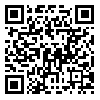BibTeX | RIS | EndNote | Medlars | ProCite | Reference Manager | RefWorks
Send citation to:
URL: http://umj.umsu.ac.ir/article-1-1873-en.html

 , Karim Shams asenjan *
, Karim Shams asenjan * 
 , Aliakbar Movassaghpour
, Aliakbar Movassaghpour 
 , Parvin Akbarzadelale
, Parvin Akbarzadelale 
 , Fateme sabaghi
, Fateme sabaghi 
 , Abdolnaser Moghadam
, Abdolnaser Moghadam 
 , Nima Dehdilani
, Nima Dehdilani 
 , Parisa Lotfinejad
, Parisa Lotfinejad 

Background and aims : Implication of Umblical cord blood (UCB) as a safe and rich source of stem cell has opened a new window toward treatment of different disease in regenerative medicine. Many various methods have been exploited to purify the UCB in order to increase the percent of nucleated cells (NCs) and decrease the amount of red blood cells (RBCs) which is required for better outcome of transplantation. Hydroxyl ethyl starch (HES) is a sedimentation factor used for RBCs sedimentation and raised some paradox competence in different studies. Thus, in the present study we are aimed to determine the correlation among HES concentration, centrifugation force, temperature, tube diameter and time on the isolation efficiency of NCs and RBCs sedimentation.
Materials and methods : UCB was collected from the woman who was undergone normal vaginal delivery. The efficiency of isolation was investigated through enumeration and viability of NCs and RBCs in each step on taken UCB beyound the different concentrations of HES (0.5%, 1.1%, 1.8%, 2.5% and 3%), various relative centrifugation forces (RCFs) of 50g, 100g and 200g for 1, 5 and 10 minutes, diverse 22° C, 10°C and 4°C temperatures and different . In addition UCB sample was incubated in 22 ° for 30, 60, 90, 120, 150 and 180 minutes to test the effect of time on RBCs sedimentation. The height to diameter ratio effect of test tube also was considered.
Results : The mean percents of isolated NCs were 66.8 ± 4.1%, 73.3 ± 3.2%, 75.1 ± 3.6%, 76.9 ± 2.9 % and 69.9 ± 4.3% for the concentrations of 0.5 %, 1.1%, 1.8%, 2.5% and 3% respectively. The most NCs were isolated by employing RCF of 50g and temperature of 22 °. Incubation in 30, 60, 90 minutes led to isolation of 57±2.6%, 63±3.7% and 64±3.1% of NCs. Using of tubes with the diameters of 25 mm and 15 mm resulted in 58±6% and 76±3.8 % isolation .
Discussion and conclusion : The number of NCs and RBCs in UBC palys pivotal role in transplantation success. The maximum NCs isolation and RBCs sedimentation percent were 76% and 90% respectively under the following condition: RCF of 50g, centrifugation for 10 minutes, and incubation for 60 minutes (p<0.05) and HES 2.5%. Further studies are required to assess the effect of other factors on isolation rate of NCs and RBCs sedimentation.
SOURCE: URMIA MED J 2013: 24(7): 492 ISSN: 1027-3727
| Rights and permissions | |
 |
This work is licensed under a Creative Commons Attribution-NonCommercial 4.0 International License. |



